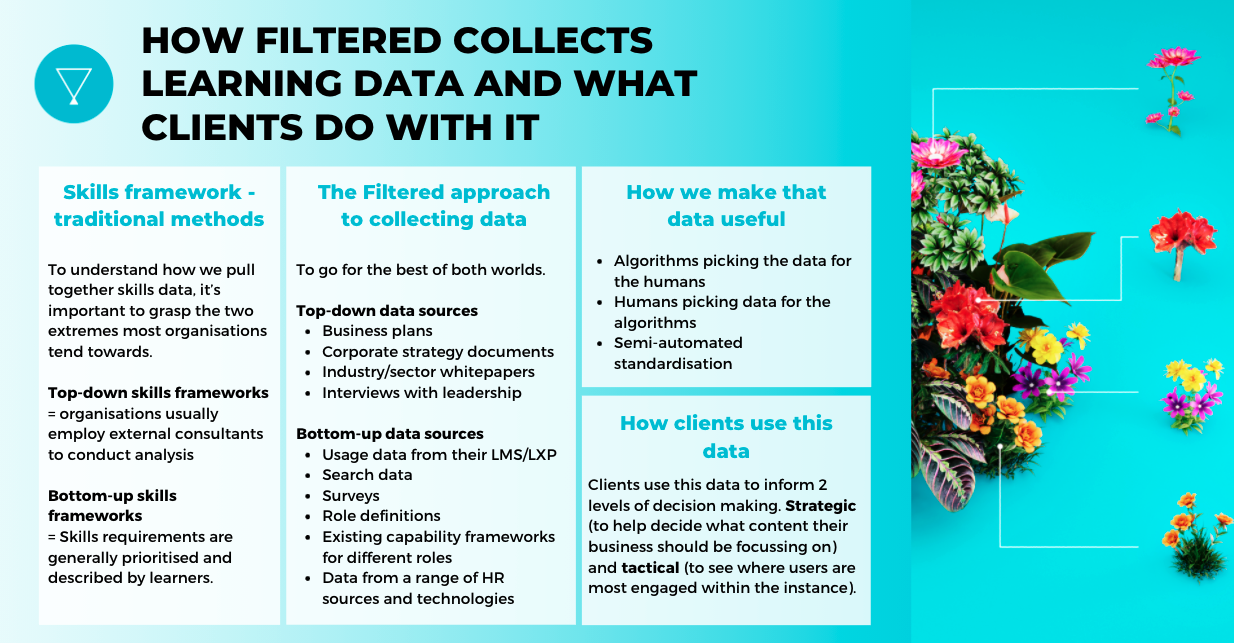Have you ever heard a word so often that it begins to lose its meaning? I’m starting to feel that way about ‘skills’. Everyone is talking about skills. McKinsey, Bersin, the OECD, LinkedIn, your boss, your auntie and your uncle. Upskilling and reskilling are well and truly on the agenda.
In a fundamental sense, this is heartening. In its simplest definition, a skill is the ability to do something. And the purpose of L&D is to help people do things they currently can’t. It makes sense that skills are a focus. But, as ever, discussions about skills are shrouded in confusion and complexity.
Taxonomies, ontologies, matrices and clouds are in! These universal ontologies promise to make skills a ‘common currency’ of business and boast many thousands of skills. But are these new and elaborate ways of configuring lists of nouns and verbs helping? Are we any closer to helping organisations understand which skills to focus on, and how to build them?
Skills are in vogue. But in a world that’s constantly shifting, that’s transforming faster than it ever has, faster than I can even write, this article is about something less fashionable. Those elements of skills building that are unavoidable and unlikely to change any time soon. The things that will help you cut through the noise and focus on the task at hand.
1) Diagnose
To understand what skills your organisation needs to build in the future, the best place to look is the past, by: diagnosing the situation. If you don’t, any skills strategy will be built on creaking foundations.
To make sure your skills strategy is future-focussed, this discovery process should be about identifying gaps. You need to understand the things your business can’t currently do. The first question should be which of these your organisation needs to do to execute its business strategy.
Go hard on strategy at a company and business unit level. Understand what the strategy is, how robust it is, and whether the organisation is serious about it or not before doing anything else.
Once you’ve interrogated the strategy, start talking to stakeholders. Interview and survey department heads, line managers and employees to uncover the most pressing operational challenges.
The next step is to delve into the data. By aggregating as many data sources as you have access to, you’ll build a validated picture of skills demand.
 By working through this process, your understanding of skills demands will be grounded in outcomes. Not abstractions.
By working through this process, your understanding of skills demands will be grounded in outcomes. Not abstractions.
2) Prioritise
Once you’ve completed your diagnosis, it's time to prioritise. By synthesising your research the highest gain skills should emerge. The aim of this process isn’t to capture every possible skill required by your workforce. It should be focussed on those that are critical to your business strategy.
The issue with universal skills taxonomies that attempt to understand entire workforces in the language of skills is that everything becomes a priority. It’s an example of the do-it-all strategy trap A.G Lafley highlights in Playing to Win. Does any organisation have the resources to service every possible learning need? It seems unlikely.
As Micheal Porter recognised, the essence of strategy is choosing what not to do. Identifying your organisation’s most high value skills will help to guide investment and resources into the most rewarding places.
There will be plenty of skills that are important but not critical. For these, decide whether a generic description will suffice and whether there are off-the-shelf resources to enable easy self-serve access.
For those skills that really are critical, go deeper. Define the skill clearly with nuance, identify supporting domain-specific expertise, and work out robust measures of confidence or performance to measure them.
3) Develop
Once you know which skills you need to prioritise, the next challenge is to actually get people to build them. To do this, you need to work out how to motivate employees and support them through their upskilling journeys.
Just as you need to prioritise skills for your business, learners need to prioritise skills for themselves. If an employee focuses on developing one skill at a time, success is likelier than if they take a scattergun approach.

You also need to understand that skill development is difficult. There will be points where people know what they should do, but still don’t do it. This is because, too often, learning is bundled into single programmatic experiences. You need to space and scaffold experiences over longer periods to help people overcome dips in motivation and development plateaus.
There’s also more to skill development than connecting people with content. Successful upskilling requires doing. Design skill journeys for the audience that include practicing the skill as well as the content and platforms to support learning about it. For high value skills you should also consider finding coaches and internal experts. People can succeed without coaches or mentors but it's rare because of the motivation aspect of skill development.
What’s next?
These steps aren’t intended to be novel, and are by no means exhaustive. There’s a lot that goes into getting skills building right. But by focussing on diagnosis, prioritisation and motivation, your skills strategy is far likelier to succeed. Solving skills is hard work and worth taking seriously. It's a challenge the team at Filtered are focussed on solving. If you’re also on this journey, please do get in touch.

